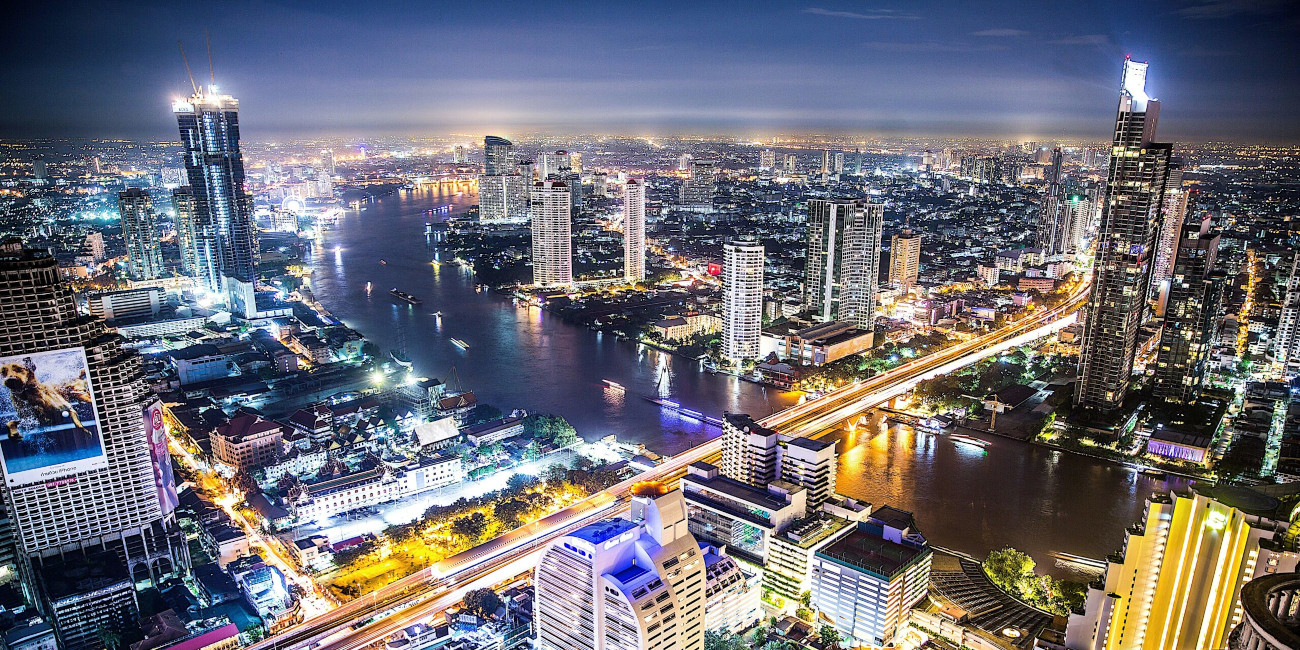Thailand’s Economy: A Rising Star in Southeast Asia and Beyond

Thailand, often referred to as the “Land of Smiles,” is not just a tourist paradise but also a dynamic economic force in Southeast Asia. With its strategic location, robust infrastructure, and diverse economy, Thailand has positioned itself as a key player in the region and a gateway to Asia. In this article, we’ll explore Thailand’s economic landscape, its future potential, and how it collaborates with other economies to drive growth and innovation.
1. Thailand’s Economy at a Glance
Thailand is the second-largest economy in Southeast Asia, after Indonesia, and ranks among the top 25 economies globally by GDP. As of 2023, Thailand’s GDP stands at approximately $500 billion, with a growth rate hovering around 3-4% annually. The country has a relatively low unemployment rate of about 1%, and its inflation rate remains manageable, making it a stable environment for investment and business.
The Thai economy is characterized by its diversity, with strong contributions from agriculture, manufacturing, tourism, and services. The country is also a major exporter, ranking among the world’s top producers of automobiles, electronics, and agricultural products like rice and rubber.
2. The Pillars of Thailand’s Economy
Thailand’s economic strength lies in its well-balanced and diversified sectors. Here are the main pillars that drive its economy:
- Services and Digital Economy: The service sector, including finance, healthcare, and education, is growing rapidly. Thailand is also embracing the digital economy, with e-commerce, fintech, and tech startups gaining momentum.
- Tourism: Before the pandemic, tourism contributed nearly 20% of GDP, with millions of visitors flocking to destinations like Bangkok, Phuket, and Chiang Mai. The sector is rebounding strongly, with 2023 seeing a significant return of international travellers.
- Manufacturing and Export: Thailand is often called the “Detroit of Asia” due to its thriving automotive industry. It’s also a global hub for electronics manufacturing, producing hard drives, semiconductors, and appliances. Exports account for over 60% of GDP, with key markets including China, the US, and Japan.
- Agriculture: Despite urbanization, agriculture remains a vital part of the economy, employing about 30% of the workforce. Thailand is the world’s leading exporter of rice and a major producer of rubber, sugar, and seafood.
3. Thailand’s Economic Potential in the Future
Thailand’s future looks promising, thanks to several key factors:
- Sustainability Focus: Thailand is investing in green energy, aiming to generate 30% of its energy from renewable sources by 2030. This aligns with global trends and opens opportunities in clean energy and sustainable industries.
- Strategic Location: Situated at the heart of Southeast Asia, Thailand serves as a gateway to ASEAN’s 680 million consumers. Its ports, airports, and road networks make it a logistics hub for the region.
- Government Initiatives: The Thai government is actively promoting initiatives like Thailand 4.0, which focuses on innovation, technology, and high-value industries such as robotics, biotechnology, and renewable energy.
- Infrastructure Development: Major projects like the Eastern Economic Corridor (EEC) aim to transform Thailand into a high-tech industrial hub, attracting foreign investment and boosting economic growth.
4. Thailand’s Cooperation with Other Economies
Thailand’s economy is deeply interconnected with regional and global markets. Here’s how it collaborates with other economies:
- Global Partnerships: Thailand is actively engaging with international organizations like the World Bank, IMF, and WTO to promote economic stability and growth.
- ASEAN Integration: As a founding member of ASEAN, Thailand plays a central role in regional trade and economic cooperation. The ASEAN Economic Community (AEC) promotes free trade, investment, and labor mobility among member countries.
- Free Trade Agreements (FTAs): Thailand has FTAs with major economies like China, Japan, South Korea, and Australia, facilitating trade and investment flows.
- Belt and Road Initiative (BRI): Thailand is a key partner in China’s BRI, which is funding infrastructure projects like high-speed railways and ports, enhancing connectivity across Asia.
5. Challenges and Opportunities
While Thailand’s economy has immense potential, it also faces challenges:
- Income Inequality: Despite overall growth, income disparity remains an issue, with rural areas lagging behind urban centers.
- Political Stability: Periodic political uncertainties can impact investor confidence, though the country has shown resilience in maintaining economic stability.
- Global Competition: As other Southeast Asian nations like Vietnam and Indonesia rise, Thailand must continue to innovate and diversify to stay competitive.
However, these challenges also present opportunities. For instance, addressing income inequality can unlock the potential of rural markets, while political reforms can create a more predictable environment for investors.
6. Why Thailand Matters in Asia and Beyond
Thailand’s economy is more than just numbers; it’s a story of resilience, adaptability, and ambition. From its bustling cities to its serene countryside, Thailand offers a unique blend of tradition and modernity that fuels its economic growth. As the country continues to innovate and collaborate with global partners, it is poised to remain a vital player in Southeast Asia and a bridge to the wider Asian economy.
Thailand’s economy is a shining example of how a nation can leverage its strengths, embrace change, and thrive in a competitive global landscape. Whether you’re an investor, entrepreneur, or simply someone interested in economic trends, Thailand offers a wealth of opportunities and insights. As the country moves forward, its commitment to innovation, sustainability, and regional cooperation ensures that its economic story will continue to inspire and impress.
